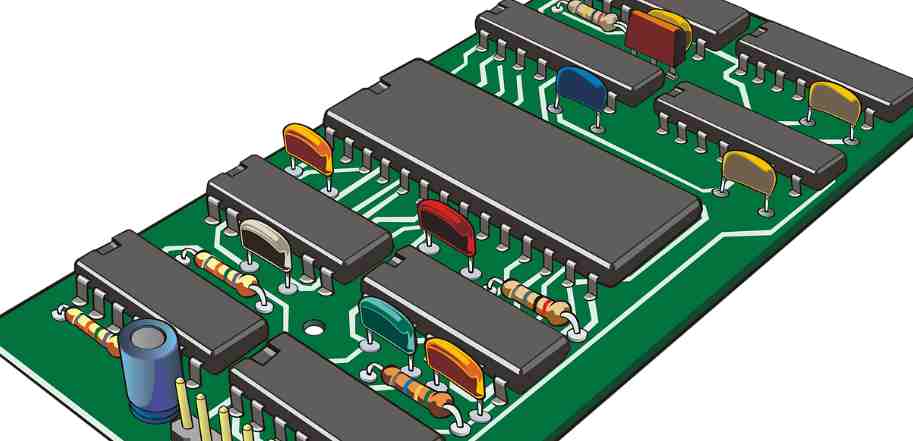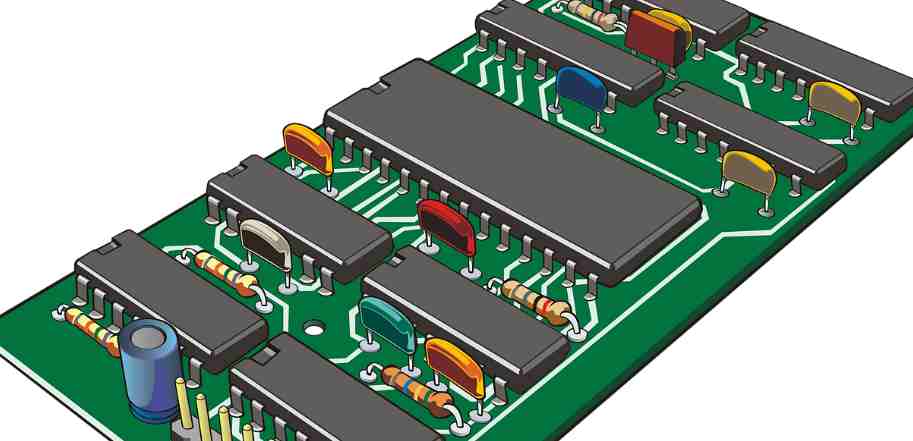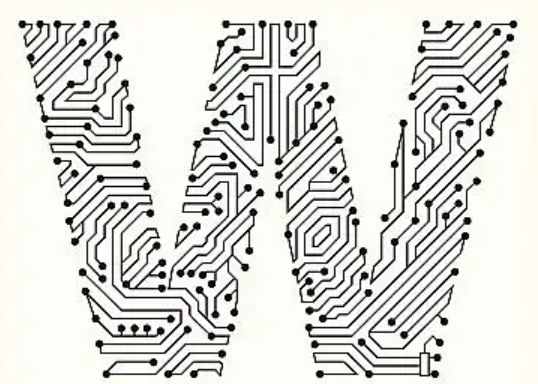
Any "long" signal path on a printed circuit boardcan be regarded as a transmission line. If the transmission delay time of the line is much shorter than the rise time of the signal, the reflection generated during the rise of the signal will be drowned. Overkick, recoil and ringing are no longer present. For most current MOS circuits, the line length can be measured in meters without signal distortion due to the much larger ratio of the rise time to the line transmission delay time. And for fast logic circuit, especially * high speed ECL.
For integrated circuits, due to the increase in edge speed, if no other measures, the length of the line is greatly shortened to maintain the integrity of the signal.
There are two ways to make high-speed circuits work on relatively long lines without serious waveform distortion. TTL adopts Schottky diode clamping method for the * falling edge, so that the overimpulse is clamped at a level one diode voltage drop lower than the ground potential, which reduces the backkick amplitude behind, and the slow rising edge allows overimpulse. But it is attenuated by the relatively high output impedance (50 to 80Ω) of the circuit in the level "H" state. In addition, due to the high immunity of the level "H" state, the recoil problem is not very perfect. For HCT series devices, if Schottky diode clamping and series resistance terminal method are combined, the improvement effect will be more obvious.
When there is a fan out along the signal line, the TTL shaping method described above appears to be somewhat insufficient under the condition of higher bit rate and faster edge rate. Because there are reflected waves in the line, they tend to be synthesized at high speed, which leads to serious signal distortion and reduced anti-interference ability. Therefore, in order to solve the reflection problem, another method is usually used in ECL systems: line impedance matching method. In this way, the reflection can be controlled and the integrity of the signal can be obtained.
Strictly, he says, transmission lines are not needed for conventional TTL and CMOS devices with slower edge speeds. Transmission lines are also not always needed for high-speed ECL devices with faster edge speeds. But when transmission lines are used, they have the advantage of predicting line delay and controlling reflection and oscillation through impedance matching.
1. The basic factors that determine whether to use a transmission line:
(1) the speed along the system signal, (2) the line distance, (3) the capacitive load (how much fan out), (4) the resistive load (how the line is terminated); (5) Allowable recoil and overshoot percentage (reduction degree of AC immunity).
2. Several types of transmission lines
(1) Coaxial cable and twisted pair: They are often used for system to system connections. The characteristic impedance of coaxial cable is usually 50Ω and 75Ω, and twisted pair is usually 110Ω.
(2) Microstrip wire on printed board: Microstrip wire is a strip guide (signal wire). It is separated from the ground plane by a dielectric. If the line's thickness, width, and distance from the ground plane are controllable, so is its characteristic impedance. The characteristic impedance Z0 of microstrip line is:
Do a piece of PCB board four steps analysis
(3) Strip line in printed board: Strip line is a copper strip line placed in the middle of the dielectric between two layers of conductive plane. If the thickness and width of the line, the dielectric constant of the medium and the distance between the two conducting planes are controllable, then the characteristic impedance of the line is also controllable. The characteristic impedance of the strip line is:
Do a piece of PCB board four steps analysis
3. End the transmission line
When the receiving end of a line is connected with a resistance equal to the characteristic impedance of the line, the transmission line is said to be connected in parallel. It is mainly used for obtaining better electrical performance, including driving distributed load.
Sometimes in order to save power consumption, a 104 capacitor is connected to the resistance of the opposite end to form an AC terminal circuit, which can effectively reduce the DC loss.

A resistance is connected in series between the driver and the transmission line, and the end of the line is not connected to the resistance. This method of terminating is called series terminating. Overshoot and ringing on longer lines can be controlled by series damping or series terminating techniques. Series damping is achieved using a small resistance (typically 10 to 75Ω) in series with the output of the driver door. This damping method is suitable for use in connection with lines whose characteristic impedance is controlled (such as baseboard wiring, ground-less circuit boards and most wound wiring, etc.).
The sum of the value of the series resistance and the output impedance of the circuit (driving gate) at series terminations is equal to the characteristic impedance of the transmission line. Series terminal connection has the disadvantages of lumped load only at the terminal and long transmission delay time. However, this can be overcome by using redundant series terminating transmission lines.
4. Unterminated transmission line
If the line delay time is much shorter than the signal rise time, the transmission line can be used without series terminating or parallel terminating. If the double delay of a non-terminal line (the time it takes the signal to make one round trip on the transmission line) is shorter than the rise time of the pulse signal, then the recoil due to non-terminating is about 15% of the logical swing. The larger open route length is approximately:
Lmax < tr/2tpd
Where: tr is the rising time
tpd is the transmission delay time per line length
5. Comparison of several terminating modes
Both parallel terminal connection and series terminal connection have their own advantages. Whether to use one or both depends on the designer's preference and the requirements of the system. The main advantages of the parallel terminal connection are the high speed of the system and the complete signal transmission on line without distortion. The load on the long line will neither affect the transmission delay time of the driving gate driving the long line nor affect its signal edge speed, but will increase the transmission delay time of the signal along the long line. In driving a large fan out, the load can be distributed along the branch short line, rather than the terminal that lumps the load online as in series terminations.
The series terminal method enables the circuit to drive several parallel load lines. The delay time increment caused by the series terminal connection due to the capacitive load is about twice as large as that of the corresponding parallel terminal connection, while the edge speed is slowed down and the driving gate delay time is increased for the short line due to the capacitive load. However, the crosstalk of the series terminal connection is smaller than that of the parallel terminal connection. The main reason is that the signal amplitude transmitted along the series terminal is only half of the logical swing, so the switching current is only half of the parallel terminal switching current, small signal energy crosstalk is small.






